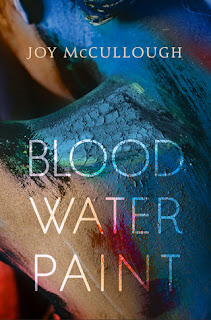What a treat to have
Caroline Starr Rose on the blog today!
I first fell in love with Caroline's writing with the beautiful novel-in-verse,
May B. I immediately bought it, knowing that it would be a book I wanted to share with my daughters (I've since read it with my oldest, and she loves it!).
Since then, I've eagerly awaited all of her releases, from the gorgeous and poignant
Over in the Wetlands to her most recent middle grade novel,
Jasper and the Riddle of Riley's Mine, a thrilling adventure set deep in the Yukon wilderness.
Read on for a summary of her latest picture book,
RIDE ON, WILL CODY! and an interview about this exciting addition to Caroline's award-winning literature for children. A teacher's guide is available
HERE.
Racing, flying,
ever riding,
hurry, hurry on ahead!
As legend has it, before he was America’s most beloved Wild West showman, young Will “Buffalo Bill” Cody rode for the Pony Express. This lively, lyrical, and action-packed story tells of Will’s famous twenty-one hour journey through Wyoming, where he rode close to 300 miles on twenty-one horses! The trip was said to be the third-longest ride in Pony Express history. Whether truth or myth, Will Cody’s account helped ensure that the story of the Pony Express lived on.
Hi Caroline! This sounds like such a fun story and a great read-aloud!
There are so many vibrant characters from the Frontier West. How did you decide
to write a picture book about the young man who grew up to be Buffalo Bill?
In 2012, my family was on vacation in Colorado. I
happened to notice a sign in Golden for a Buffalo Bill Museum and convinced my
family we needed to stop in. As I walked through the exhibits, a story idea
began to stir. I didn’t know the specifics, but I knew it would be about
Buffalo Bill. The following January, I checked out a number of research books.
I was pretty convinced my story would focus on Cody’s Wild West show, but his
Pony Express work (if it happened at all — most historians now believe his Pony
Express years were fabrication) was what really caught my attention.
Tell us one fun item that you came upon during research
that did not make
it into the book?
I love this quote from Buffalo Bill about writing. It
sums up his no nonsense personality pretty well (and humors me as an author):
“Life is too short to make big letters when small ones
will do; and as for punctuation, if my readers don’t know enough to take their
breath without those little marks, they’ll have to lose it, that’s all.”
Writing about historical figures can be daunting. What
advice would you give writers who are looking to represent a person from
history with limited text and just 32 pages to work with?
Go deep rather than wide. A historical picture book
isn’t meant to cover everything in a character’s life. Pick a moment and shine
a light on the character’s response to the event. Show us her bravery or his
curiosity, her commitment or his determination. Let us live the moment right
alongside the character. Leave us feeling as if we’ve been there!
You’ve written prose and verse novels, nonfiction, and
picture books. How do you ease from one storytelling voice to another? Do some
types of writing come more easily than others for you?
I’m not sure I move from one storytelling voice to the
next with ease, but I do think it’s important for the story to be in charge of
its form and not the author. Each piece has one best way it can be
communicated. I sometimes know if a book will be verse or prose going in, but
sometimes not.
What’s really important, though, is not to force a form on a
piece of writing because it’s what I’m most comfortable with or is what I want
to try. I need to listen to the work — sometimes through trial and error — to
find the best way to “show” it to the world.
Verse is absolutely easier* for me than prose. It
somehow feels more natural (even though I wrote three prose novel manuscripts
before writing my first book, the verse novel, May B.). I don’t want to
rest on what feels most familiar, though.
*It’s important to point out no writing is every easy,
at least for me!
I love your cover! Did you get to offer input during the
illustration process?
I love it, too! The action and the colors are just
perfect.
I had much more input with WILL CODY than I did with
OVER IN THE WETLANDS. Perhaps it’s because I was with a different publishing
house or because the story was historical fiction or maybe a combination of the
two. I got to see early sketches and comments meant for illustration Joe
Lillington from both the art director and my editor. I was also invited to
leave comments about the depiction of the setting, historical elements —
anything, really. It was so interesting to watch those sketches become the
final art.
Caroline, thank you
so much for visiting Falling Leaflets, and congratulations on another wonderful
book! Readers, click on the links below to purchase RIDE ON, WILL CODY! for yourself,
your friends, and your family:

















